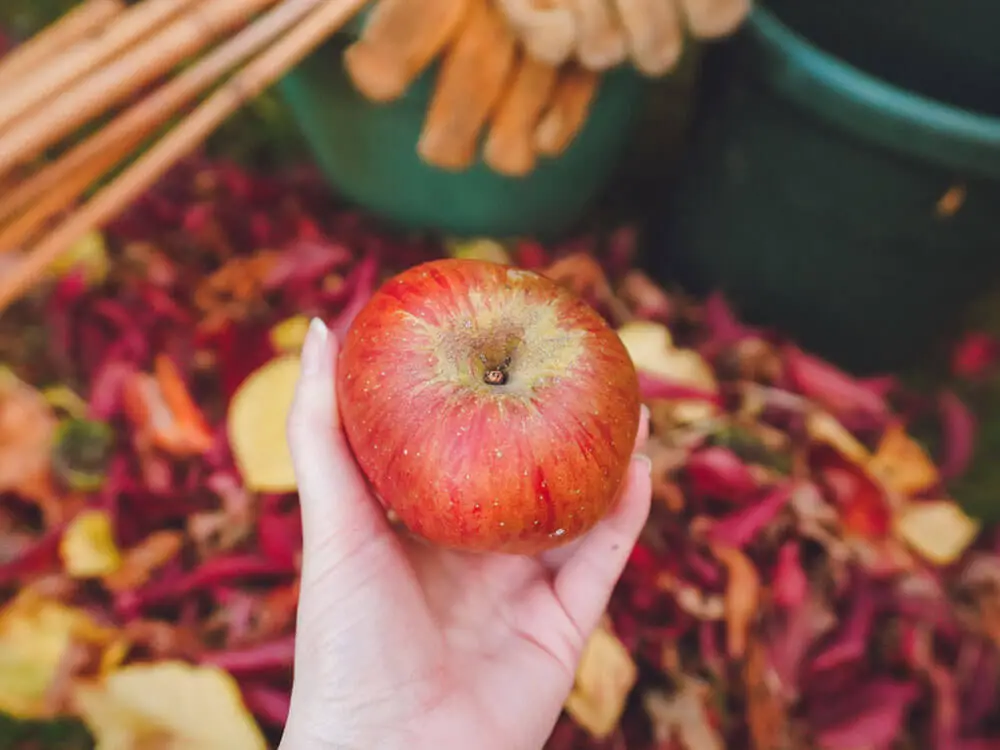11 Autumn Garden Jobs for a Small Garden
October, 2022 |Even a small garden needs a little maintenance in preparation for winter. If you live in USDA zone 9 and below, autumn is the season to get your garden ready for the wintry weather that’s headed your way. From harvesting pumpkins and planting garlic to protecting citrus trees and small garden ponds.
The ultimate fall garden checklist for small gardens
Here are 11 autumn garden jobs you might need to do this October and November before the frosts and heavy snow set in!
1. Harvest remaining veg
One of the best autumn garden jobs! Most vegetable plants will hang on until the first frost, so keep harvesting any tomatoes, eggplants, or chilies that are still producing. If there are still flowers developing, it’s probably worth snipping them off.
They probably won’t have enough time to develop before frosts, so instead the plant can put all its energy into the ripening fruits.

It’s also time to bring in any of your remaining pumpkins, squash, apples, and root vegetables for storage! Make sure everything is dry and undamaged before storing. For example, bruised apples won’t store and may affect the rest of your store.

If pumpkin plants still have green and orange pumpkins, you can harvest them and place them inside near a window to help them finish ripening.
A light frost won’t damage pumpkin fruits left outside, but usually, anything under 25ºF and the water in the pumpkin may freeze and damage the flesh. It’s also best to get them inside and away from damp weather.
Top tip: It’s a great time to try out different recipes with your bountiful garden harvest! If you have some columnar fruit trees you could create jams with the fruits, or use your mini pumpkins to make a spicy pumpkin soup!
2. Plant crops for winter
Crop planting isn’t just for spring, there are lots of vegetables that you can still plant in autumn! In USDA zones 7-9 you can plant winter hardy veg like garlic, brassicas, or broad beans. Just double-check the variety and make sure they’re cold-hardy.

3. Order and plant bulbs
If you’d like some bright cheerful blooms in early spring, now is the time to plant spring bulbs! Crocus, tulips, and hyacinth are all early-blooming flowers that grow from bulbs planted in autumn.
4. Plant a cover crop or add mulch
If your containers or vegetable patch is now sitting empty, consider growing some cover crops to stop weeds from taking over.
Sowing a cover crop (green manure) is a great way to protect the soil in a small vegetable garden or the compost in your containers.
It can stop nutrients from being washed away by rain, and it also acts like a layer of mulch when you turn it into the soil in early spring. Cover crops include plants like alfalfa or winter rye grass.
Adding a layer of compost or mulch to plants in containers or beds can add vital nutrients for spring and also stop the soil from getting too cold.
5. Organise saved seeds
If you have saved any seeds from zucchinis, tomatoes, pumpkins, etc. now is a great time to check that they’re all organized. Store them in paper bags in a cool environment out of sunlight. Make sure they have the right name on the label and remove any that seem damaged or moldy.
6. Protect plants from the cold and wind
Tender plants, like mini citrus trees, small tropical fruit trees, or tropical plants should be protected with horticultural fleece or placed inside a small greenhouse. But other half-hardy plants can stay outside with a little preparation:
- Add mulch to the tops of fruit tree containers to help insulate the soil.
- If your container plants have lots of roots around the edges of their pot (for example perennial herbs like mint or rosemary) you can protect them by using the Pacman method! Remove the plant from its pot and use a spade to split the plant and soil in half through the middle. You can then turn the two sides around and ease them back into the pot, with the roots now protected on the inside.
- Move half-hardy plants in containers inside if you have the space. If not move them to the most sheltered part of your small garden or balcony and cover them with fleece.
- Move containers into more sheltered areas to stop them from blowing over and potentially cracking in high wind.
Related Read | How to Protect Your Container Plants from Frost
Caring for tender perennials
Depending on your area and climate, some plant tubers and bulbs will need to be stored in winter. Caladiums for example, which are tropical, colorful shade loving plants, will need to be lifted, dried, and overwintered in a cool dry area indoors.
Make sure to double-check the care instructions for any plants you buy. It can be really disappointing to lose a beautiful (or expensive!) plant in the winter because it wasn’t properly protected.

7. Prepare a pond for winter
If you have a small pond in your garden there are a few ways you can protect it before the cold snap hits.
- remove any falling autumn leaves.
- Trim any marginal plants that droop into the water
- Allow more light into the pond by cutting back any excess oxygenator or floating plants.
Add all of the trimmed plant waste and leaves into your compost bin. Though before adding it, it’s best to leave any pond waste on the side of the pond for 24 hours. This allows any wildlife to make its way back to the pond before you bin or compost it.

8. Trim dying leaves and stems on perennials
Dried-out stems, dying foliage, and drooping leaves can be trimmed and tidied in the fall. Some will need cutting down to the ground, others only a light trim, so check before bringing out the secateurs. Plants that made need trimming and pruning include:
- Lavender
- Hardy geraniums
- Climbing roses
- Mint and sage plants
- Agapanthus and nerine flower stems

Some perennials like echinaceas (a great Monarch butterfly friendly plant), teasels, sedum, and alliums have really attractive seed heads, so you may choose to leave these. They can also provide a food source for wildlife too.
The dead flower stems and leaves on some plants can also help to protect plants from colder temperatures. Hydrangea and salvias for example are best pruned in the spring instead, especially if they’re in containers.

9. Remove old crops and vegetable plants
Compost leftover plant material from your vegetable plants, like tomato stems, corn stalks, or squash vines. You may also need to carefully remove or untie the stems and vines from your vertically growing veg.
This old plant material can be a great addition to your compost bin. But if the plant is diseased, only compost it if you’re using a hot composting bin.
10. Store vertical plant supports
Left outside in the cold, vertical supports like bamboo canes and wooden trellis may become weathered or damaged, so if you have the space you might want to store your vertical plant supports. Put away any heavy fruit hammocks that can be reused next year too.

11. Collect fallen autumn leaves
Remove autumn leaves from pathways or decking as they could become a slip hazard when damp. Instead, scatter them around beds as a place for wildlife to hide, or add them to your compost bin as a great carbon-rich addition!






